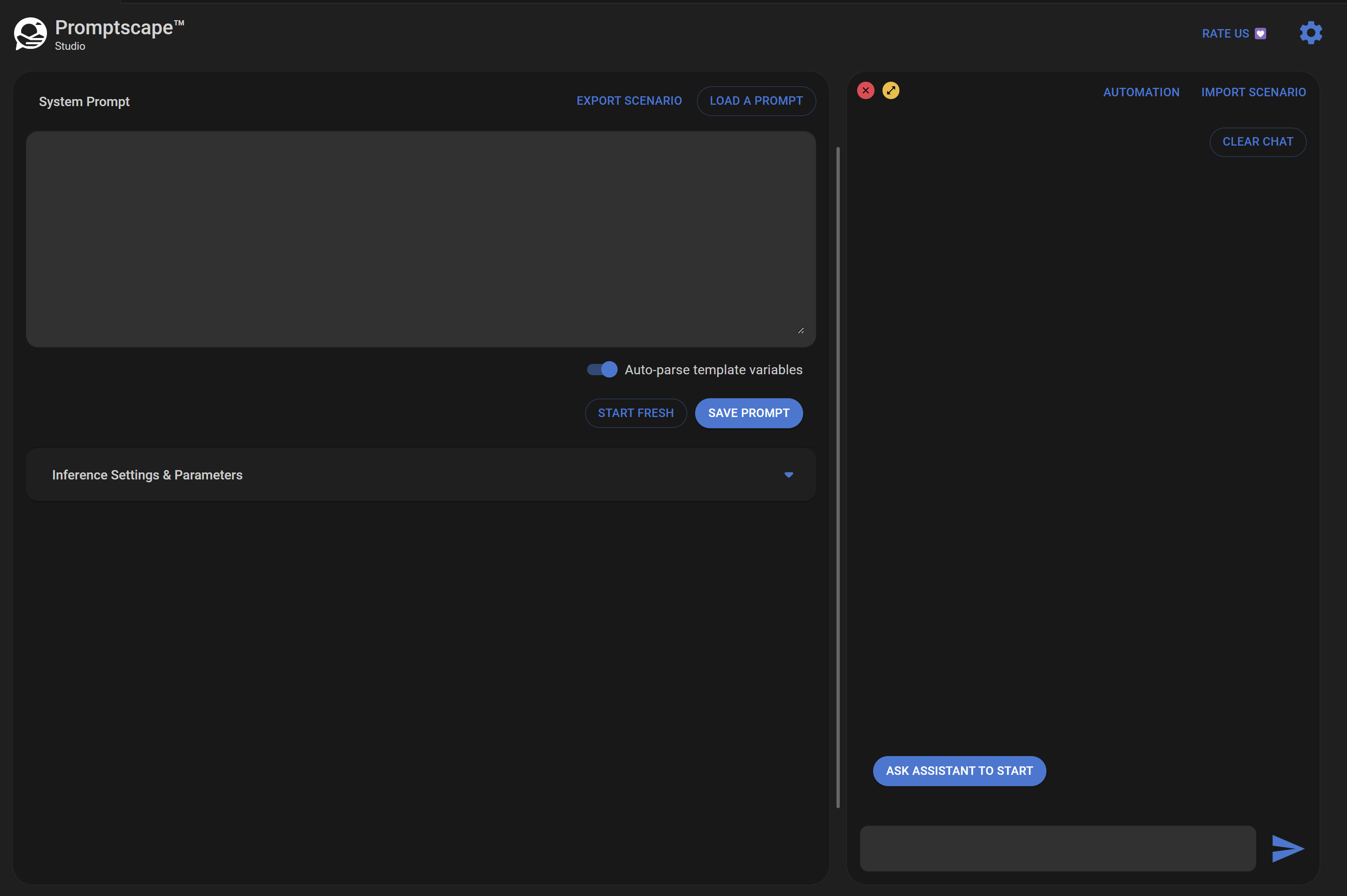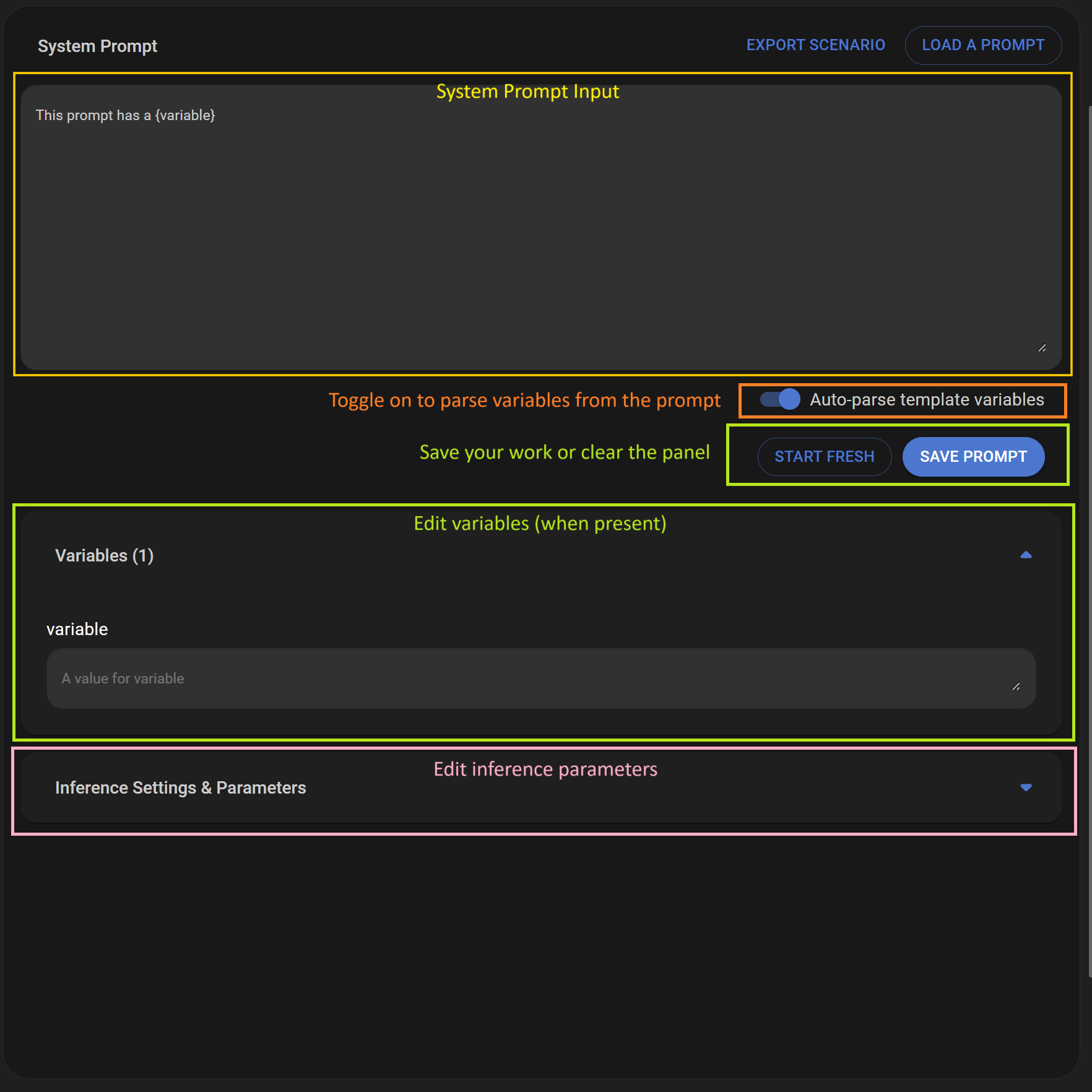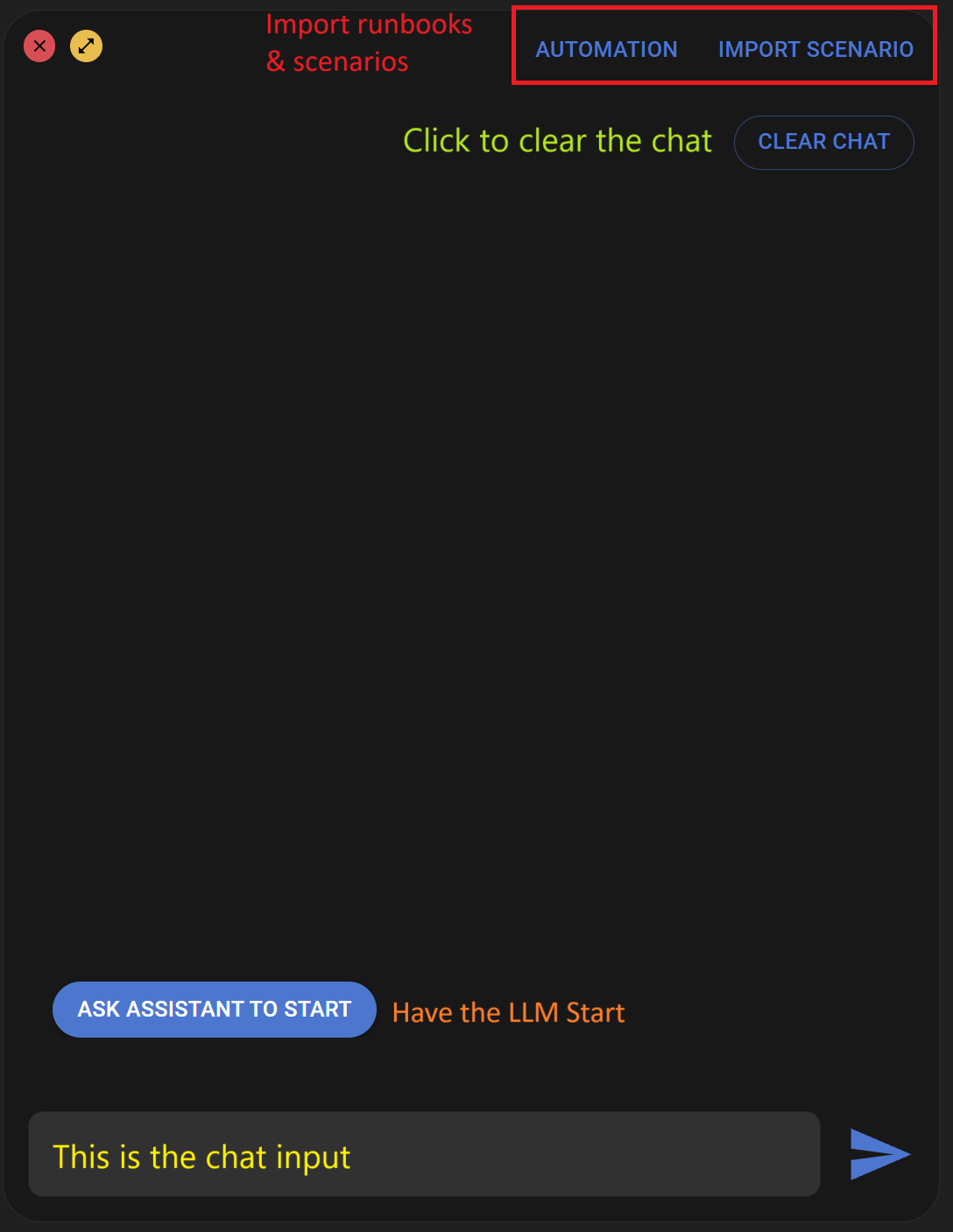Promptscape Studio
The Promptscape Studio is your prompt engineering workbench in Visual Studio Code. It provides an interactive control surface to create, edit and persist prompts, variables, scenarios, and other Promptscape assets.
Opening the Studio
The studio is access via a webview, which opens in the editor pane of VSCode. There are three easy ways to access the studio:
- Run the VSCode command
Promptscape: Open Studio. - Select the Status Bar button labeled 'Open Promptscape', which can be found at the lower left corner of your screen.
- Select any of these asset types from the Explorer: Prompt, Prompt file, or Runbook.
Studio Layout
The Studio is divided into two panels, either of which can be maximized for focus or prentating your work.
- On the left of the Studio, you'll find the Prompt panel. Here's where you work with your system prompt, provide variable data, and edit inference parameters.
- On the right is the chat panel. This provides the main input interface for testing your chat prompts. It also displays runbook execution controls when a runbook is loaded.

Prompt Panel
You use the prompt panel to provide system prompts & variables to the extension.

Walking through the image above, top to bottom:
- The Prompt input is where you enter the system prompt you are developing. If you import a prompt or load a scenario, this input will be auto-populated with that prompt text.
- Select 'Auto-parse template variables' if you want to provide values for variables in your prompt. For more detailed information on variables, see the Variables page.
- The prompt editor button cluster contains two buttons by default:
- Save Prompt - this will save the current prompt & associated variable to Workspace storage
- Start fresh - this option clears the panel
- When a saved prompt has been loaded, a third option will appear: Delete Prompt. Select this to delete the prompt from storage.
- Variable Entry
- Every variable that follows the variable template format will generage a value input here. Add values to change the behavior of your prompt, and to simulate context retrievers during testing.
- Inference settings & parameters 1. Available inference parameters (temperature, topp past message count, and many others) can be set here.
NOTE:: To learn more about which inference parameters are available for your models, and what they do, see documentation from your specific model provider.
Chat Panel
The chat panel is the primary interface for interacting with your models. It provides these main capabilities:
- Open Chat: test your prompts by chatting directly with your active model
- Scenario recall: start a conversation from any predefined point by importing an existing scenario
- Runbook execution: automatically execute a runbook script to test a multi-turn conversation.
Chat Panel Features
